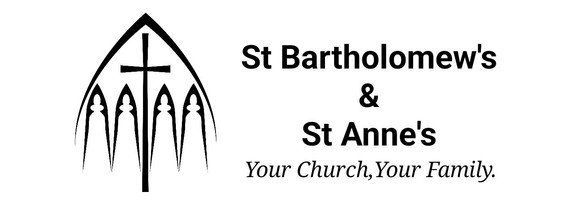An Early History of St Bart's
In the year of our Lord 305, the Roman Empire had been divided into four parts. One of the four Emperors was Constantus. He brought his son Constantine to Britain. At the time the Roman Empire and it’s Emperors were Pagans. But, there was a new religion, that was gaining strength. By then, perhaps as many as ten percent of the Romans were Christians. However, the ruling elite of the Empire were Pagans.
Constantine lived mostly in Eboracum, which is today called York. In July 306 his father died. The young Constantine must have been both popular and well respected, because his Father’s troops flocked to him. Soon afterwards, Constantine led his troops south towards Rome. On the way he had a vision, which caused him to become a Christian in 312 AD. What followed were events that turned the Roman Empire upside down. The Emperor Maximus had devised a cunning ambush. Constantine spotted the trap, and turned the situation to his own advantage. Having defeated his first Emperor, he changed the Roman Laws. So that Christians could freely worship God, within the lands that he ruled. This enraged the remaining Pagan Emperors, and they also attacked Constantine. But, by AD 324, the whole of the Roman Empire was under the control of the first of The Christian Emperors.
However, no Empire can last forever, and the Western Roman Empire fell apart by AD 500. Some historians say that Christians were then driven out by the invading Pagans. But, archaeologists have found that the reality was actually more complex. Much of Britain was ruled by Pagans, but the people who the pagans ruled, were very often Christians. In fact, some parts of Britain, such as Cornwall, Wales, and large parts of Ireland, fended off the Pagans and continued to be Christian countries. What is today England, was divided down into a mass of small Anglo Saxon Kingdoms.
In those times, (between AD 527 and AD 879), Penn was a small community, within the Kingdom of Mercia. The Mercian Kings and Queens were very powerful, and very pagan. But increasingly they were surrounded by younger and more vigorous Christian Kingdoms. By AD 656 Mercia had become a Christian Kingdom, and the Diocese of Mercia was founded. In AD 669 the Diocese of Mercia moved to Lichfield, under the stewardship of Saint Chad. There have been many changes since then, but fundamentally the Diocese of Lichfield has been in existence for a little over 1350 years.
The Christian Church in Britain, was still part of the Constantine’s Orthodox Church. But his vision of a single Church, with Seven Popes, and one Emperor, was coming under increasing strain. In 1054 The Orthodox Church split into The Greek Orthodox Church and The Roman Catholic Church.
To the south side of St Bart’s there is a circular pit, that contains the base of a Saxon Cross. It is a scheduled monument, and under the protection of Historic England. The Historic England website says the following, “Lady Godiva's cross in St Bartholomew's churchyard is an important example of a pre-Norman standing cross with a circular stepped base and socket stone. Situated in a prominent position close to the south wall of the church, it is believed to stand in its original position. Considerable remains survive from the pre-Norman period, and the cross is rare in having been discovered lying directly below a later standing cross of the medieval period during restorations in 1912. The existence of two periods of standing cross, one superimposed above the other, is a rare occurrence and illustrates the continued function of the site as a focus of public worship, which continued with the restoration of the later cross in 1912.”
Historic England states that there is good reason to believe that the Cross was endowed by Lady Godiva and/or her Husband Leofric Earl of Mercia. There are also indications, that the site on which the current Church stands, is an ancient Christian site. If so, then the site could have been used for Christian Worship in the seventh century. Penn was just a small part of the Godiva’s estates. History records them as ‘generous benefactors to religious houses’, and that they used their wealth to grow the Church. The fact that the Godiva’s raised a cross, is taken by historians as good evidence, that the Godiva’s were supporting an active Christian community. Nothing now remains of the Saxon Church, may well have once stood alongside the graveyard cross. And, the written history of the community, that used the site, is now all but lost.

